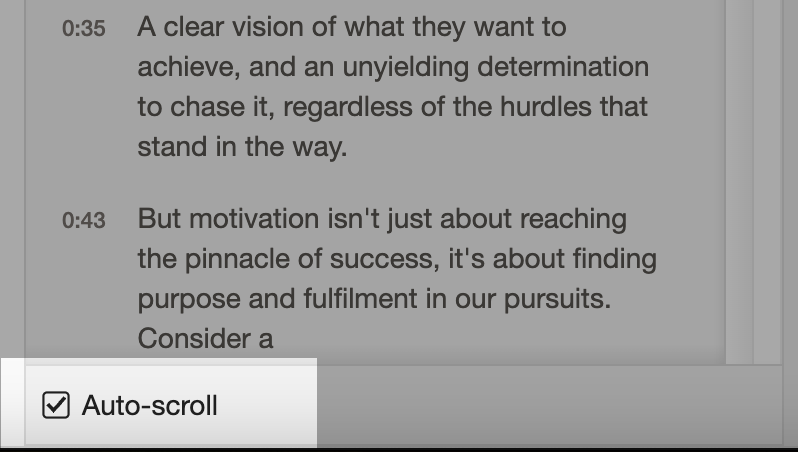Hypothesis now offers an option to use Canvas Studio videos and audio in your Hypothesis assignments. This requires that you have Canvas Studio enabled in your Canvas instance.
Creating an assignment with a Canvas Studio file
- Click on Studio in the Canvas navigation pane.
- If you already have a video or audio file in your Canvas Studio collection that you plan to use for your Hypothesis assignment, skip to Step 4. Otherwise, proceed with uploading your content to Canvas Studio.
- Click Record or Add to generate your video or audio.

- If you click Record, you can record with or without camera or screen recording. Recording without both camera and screen recording will result in an audio recording.
- If you click Add, you will be given options to either Browse Files or Add Video. Click Browse Files to upload your video or audio.
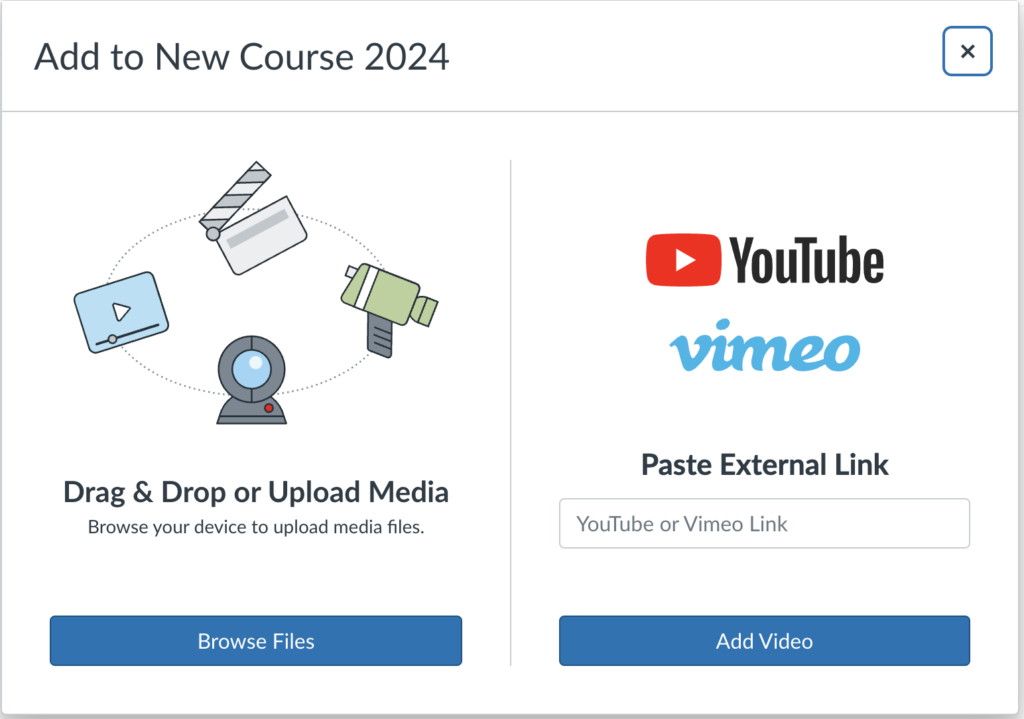
- Note: If you want to use a YouTube video, you’ll need to utilize the YouTube integration feature in Hypothesis instead of accessing the YouTube video via Studio.At this time our integration is not compatible with Vimeo videos.
- Click the video or audio file to open it and check if it has captions. Captions are needed as this is what you will be annotating.
- Click Captions.
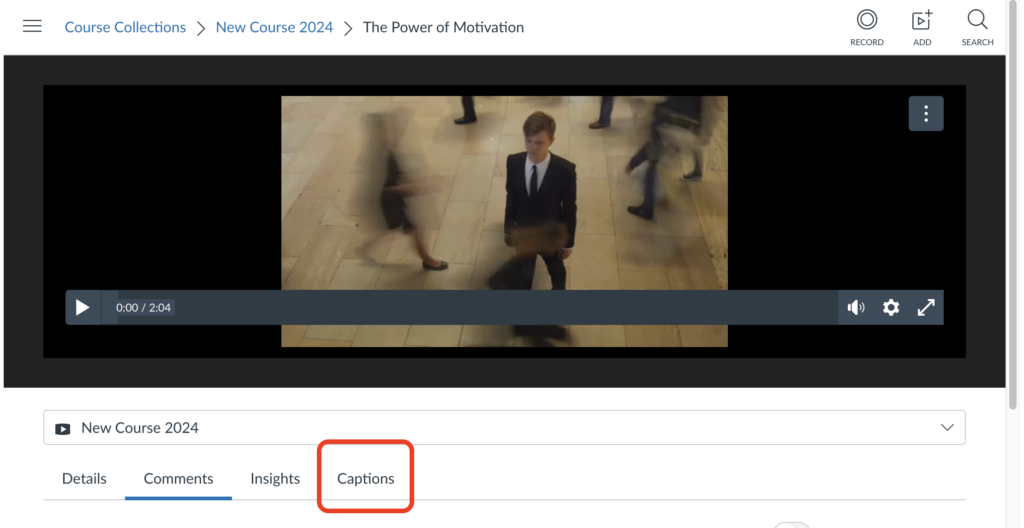
- If the video or audio file does not have a caption yet, click Request to let Canvas create auto-generated captions. If you have a caption file (.SRT or .VTT format), you may click Upload instead.
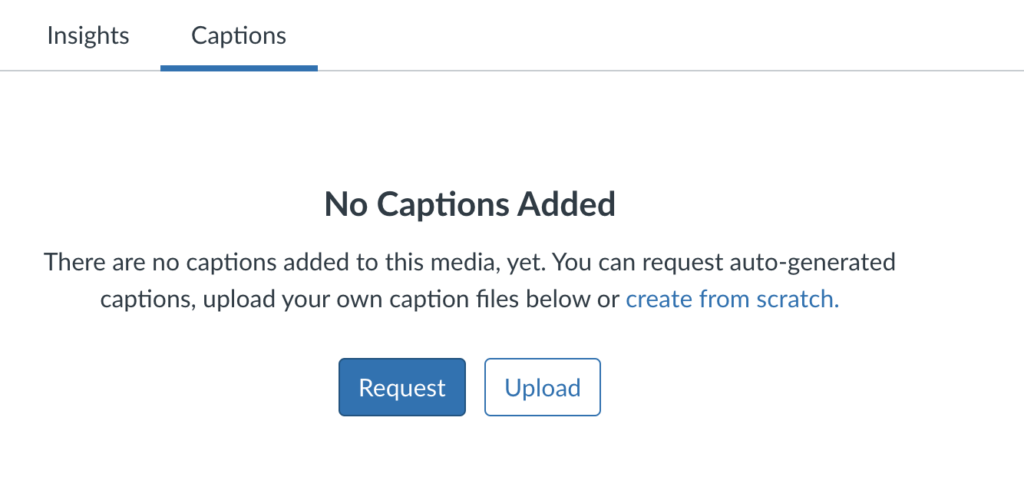
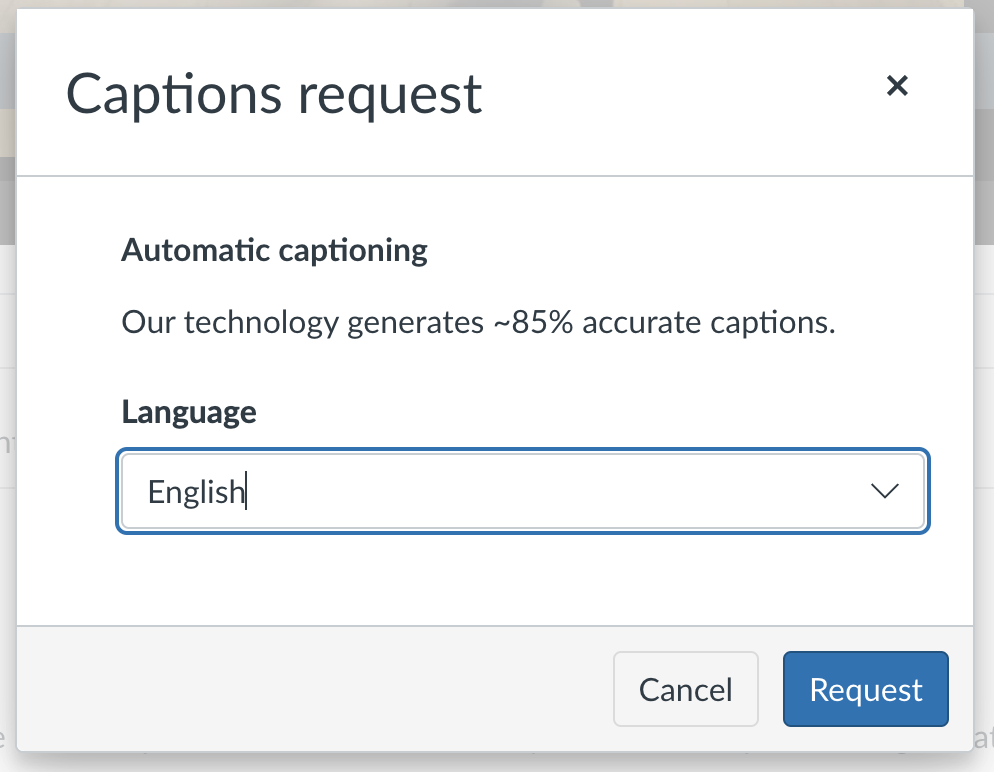
- Once the caption has been generated, click the ⋮ button right next to the the word Unpublished and select Review and Publish.
- Review the caption and make the necessary corrections. Click Publish to save the caption.
- Next, follow these steps to begin creating a new Hypothesis assignment in Canvas.
- In the Assignment Content window, click the Canvas Studio button.
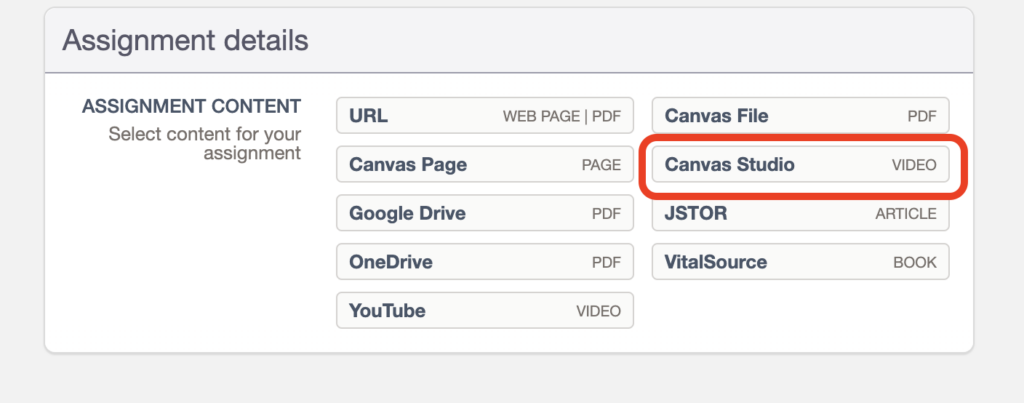
- Select the video or audio that you would like to use in your Hypothesis assignment.
- For the best experience, we strongly recommend that Hypothesis Canvas Studio assignments are configured to open in a new browser window/ tab.
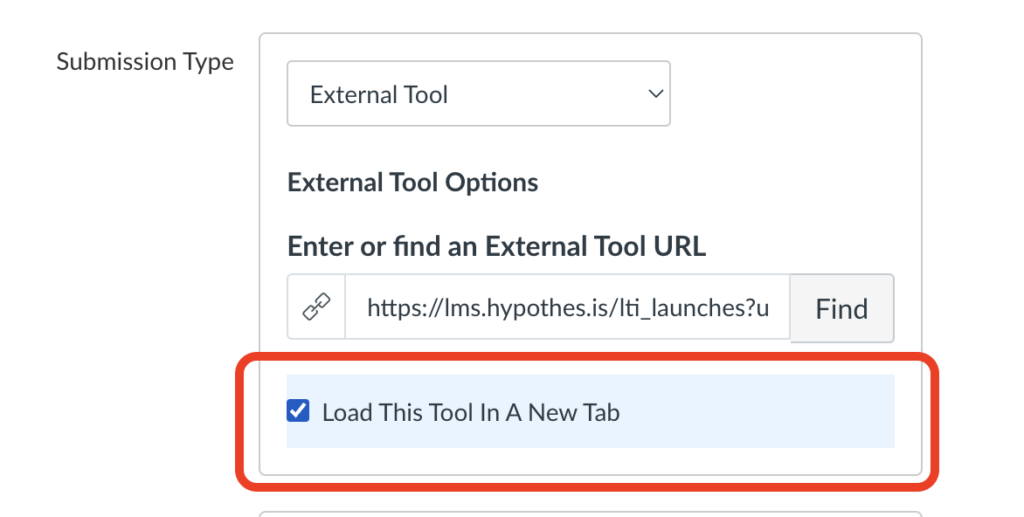
- Click Save and Publish to save the assignment.
Annotating the Canvas Studio Assignment
When the Hypothesis assignment launches, you will see the Canvas Studio file, the transcript, and the Hypothesis sidebar.
You can select text anywhere in the transcript to create a new annotation or highlight.
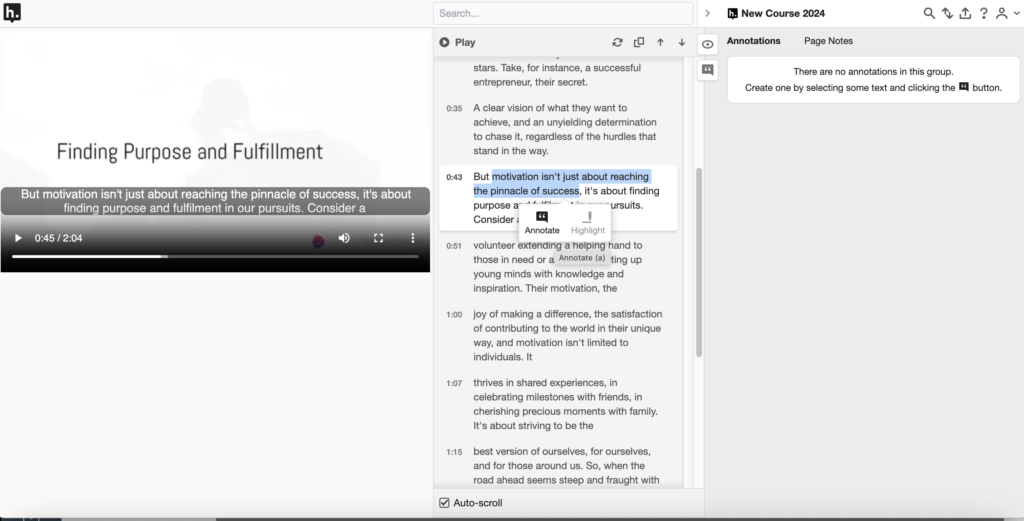
Additional features available in the Canvas Studio transcript
- Play or Pause the video using the button at the top of the transcript. The transcript will auto scroll along as the video plays.
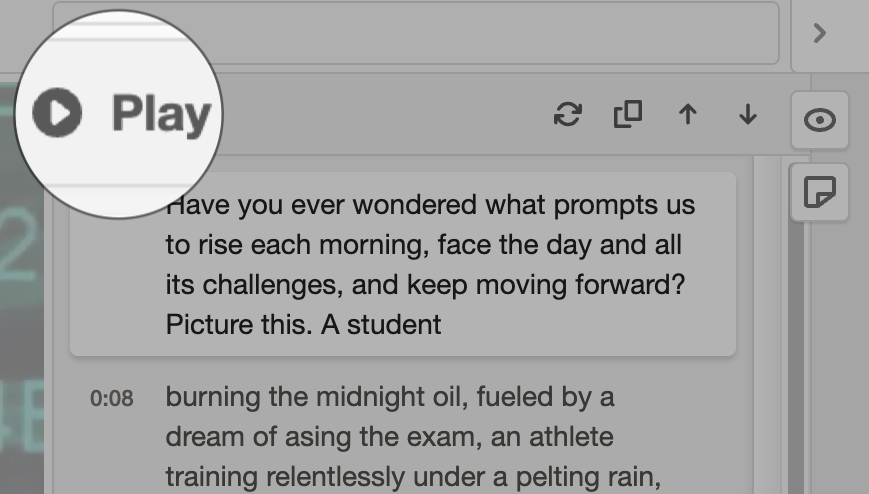
- Search for text anywhere in the transcript.
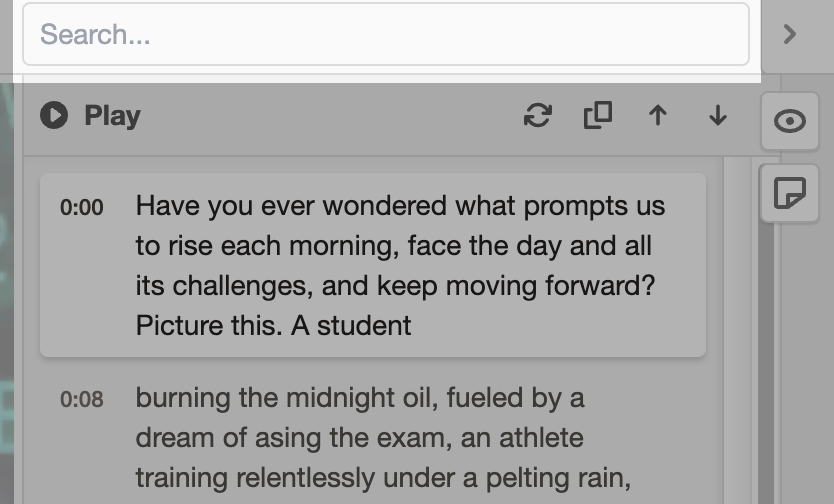
- Re-sync the transcript with the video at any time by clicking the Sync Transcript icon.
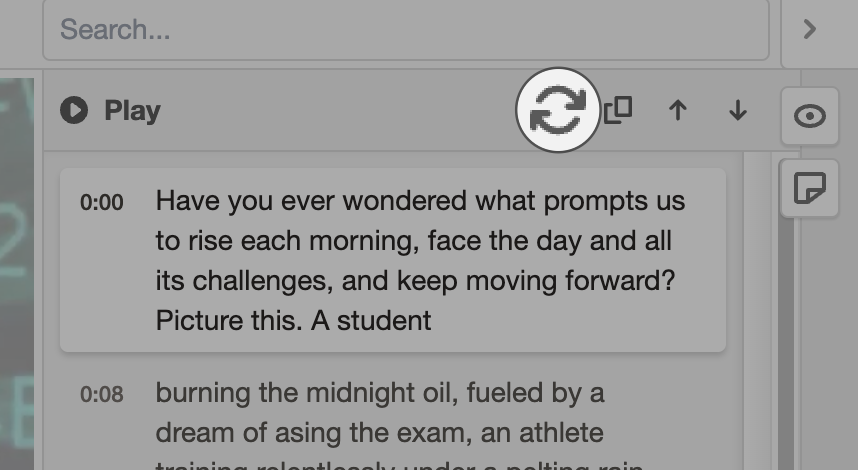
- Copy the transcript by clicking the Copy Transcript icon.
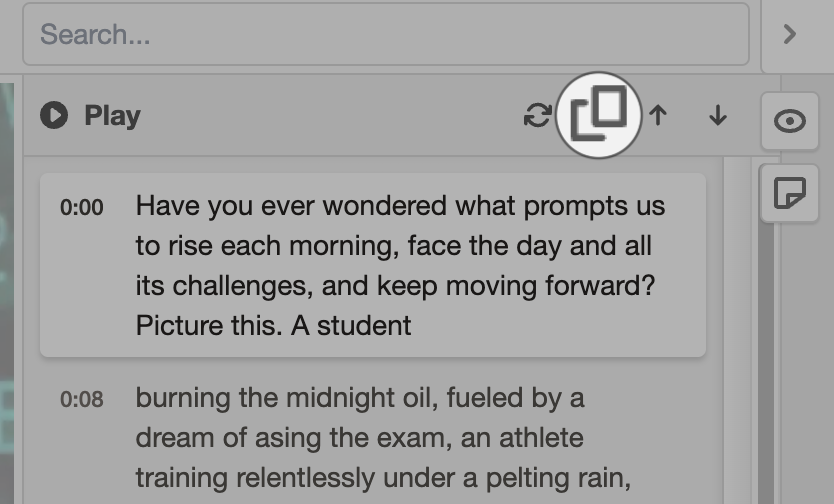
- Click on a portion of the transcript to jump to that section of the video.
- Jump to the beginning or end of the transcript by clicking the Scroll to Top or Scroll to Bottom buttons respectively.
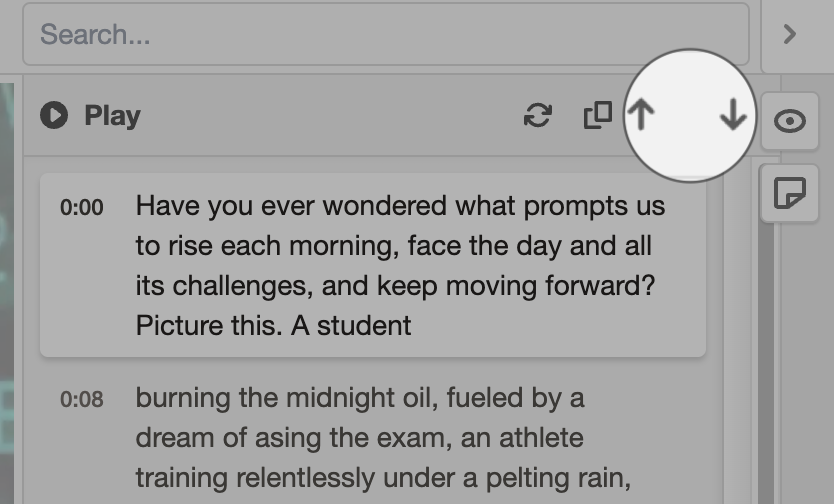
- Uncheck Auto-Scroll to stop the transcript from automatically scrolling while the video plays.
